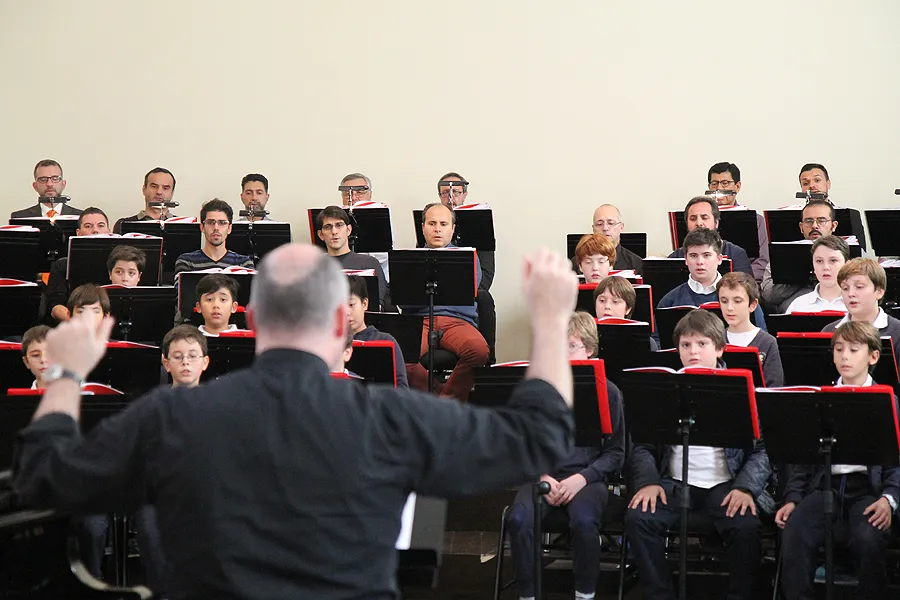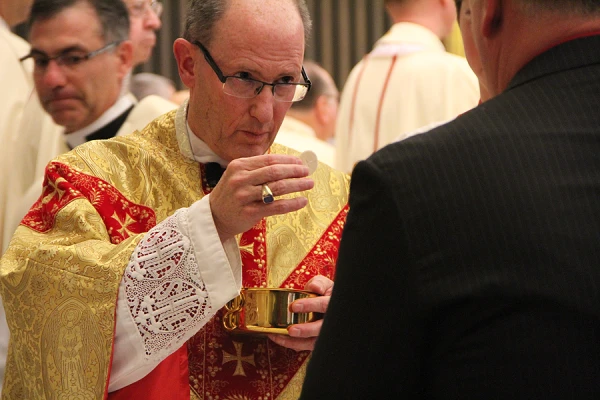
Vatican City, Apr 17, 2018 / 12:32 pm (CNA/EWTN News).- The Vatican’s Sistine Chapel Choir, known as ‘the pope’s choir,’ will head to the United States this summer for an eight-city concert tour.
This is the choir’s first nation-wide tour and will include stops in Atlanta, New York City, St. Louis, Detroit, Miami, Boston, Chicago, and Los Angeles from July 3-July 23.
The national tour follows less than a year after the choir’s first U.S. performance in three decades, which took place last September, with the choir performing at the Basilica of the National Shrine of the Immaculate Conception in Washington D.C., New York, and Detroit.
Known officially as the Cappella Musicale Pontificia Sistina, the choir is comprised of 20 professional singers from around the world, as well as a treble section made up of 35 boys aged 9-13, called the Pueri Cantores.
With a 1,500-year history, the Sistine Chapel Choir is believed to be the oldest active choir in the world.
Mark Spyropoulos, a choir member from the United Kingdom, told EWTN that in his opinion, the purpose of the tour “is to bring to America the spiritual intensity of the Sistine Chapel, the transcendent beauty which is at the heart of the Vatican.”
“We are bringing to you some of the finest music from the Vatican and from the archives that go back to the sixteenth century,” he said. “We bring the music which reflects those famous and beautiful frescoes of Michelangelo.”
The choir’s director, Fr. Massimo Palombella, said in a statement that the Sistine Chapel Choir “is delighted and honored to embark on our historic first U.S. national tour.”
“We are excited to experience the many great cities we will visit and look forward to sharing our cutting-edge research and study of Renaissance music, directly from the archives of the Sistine Chapel, preserved in the Vatican Library, to audiences across America.”
After attending Italy’s prestigious conservatory and spending years as a theology and music teacher, Palombella became the director at the Pontifical Music Chapel and began conducting the choir in 2010.
Palombella studied philosophy and theology at the Salesian Pontifical University and trained under organ players Luigi Molfino and Bishop Valentino Miserachs Grau. He also attended the Conservatory of Turin.
Ordained a priest of the Salesian order in 1995, he began teaching dogmatic theology at the Pontifical Salesian University and the Language of Music at Sapienza University of Rome. He then succeeded Father Giuseppe Liberto as director of the Sistine Chapel Choir.
More information can be found at sistinechapelchoirtour.com.
This report contains material from EWTN News Nightly.
If you value the news and views Catholic World Report provides, please consider donating to support our efforts. Your contribution will help us continue to make CWR available to all readers worldwide for free, without a subscription. Thank you for your generosity!
Click here for more information on donating to CWR. Click here to sign up for our newsletter.




Leave a Reply